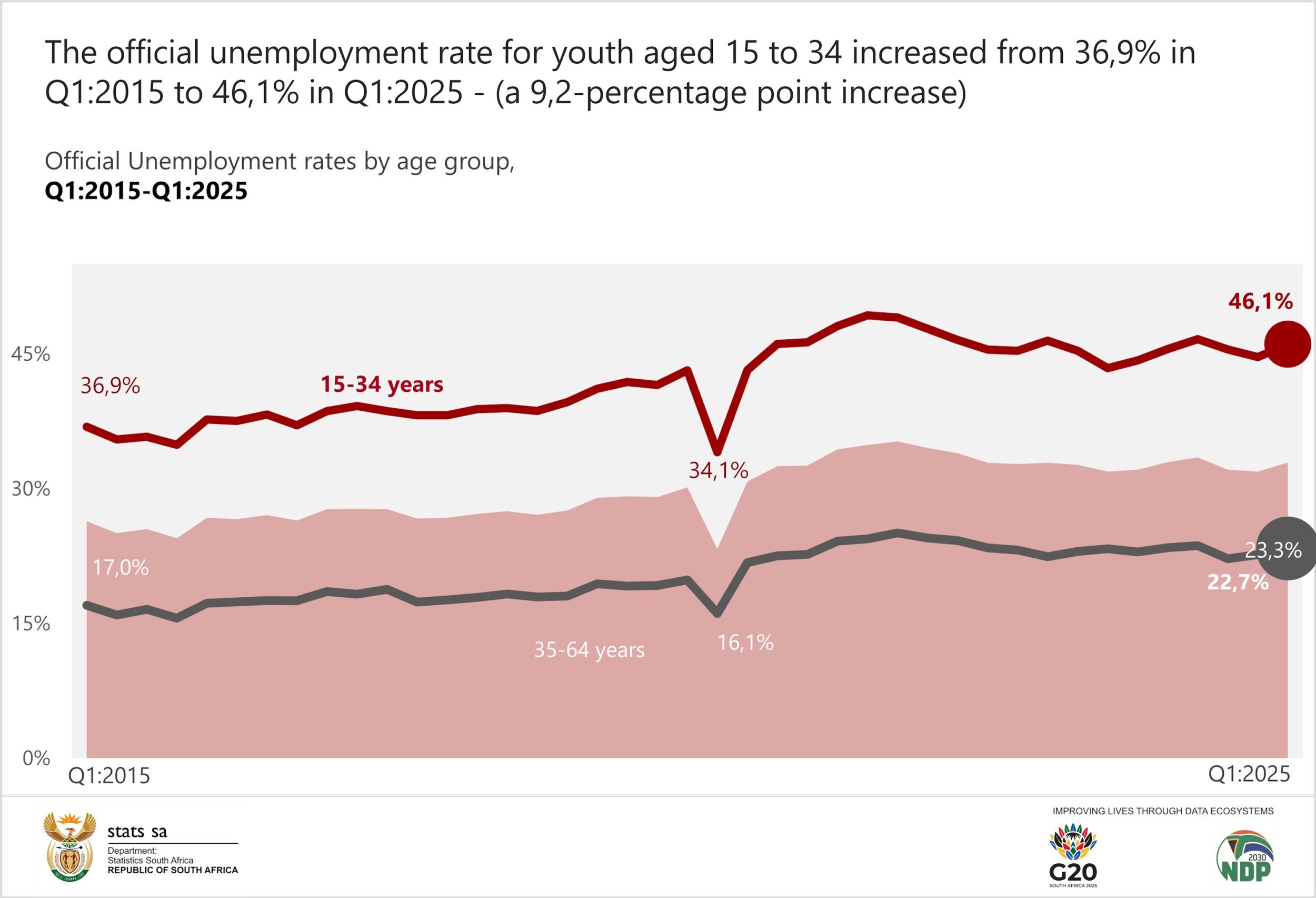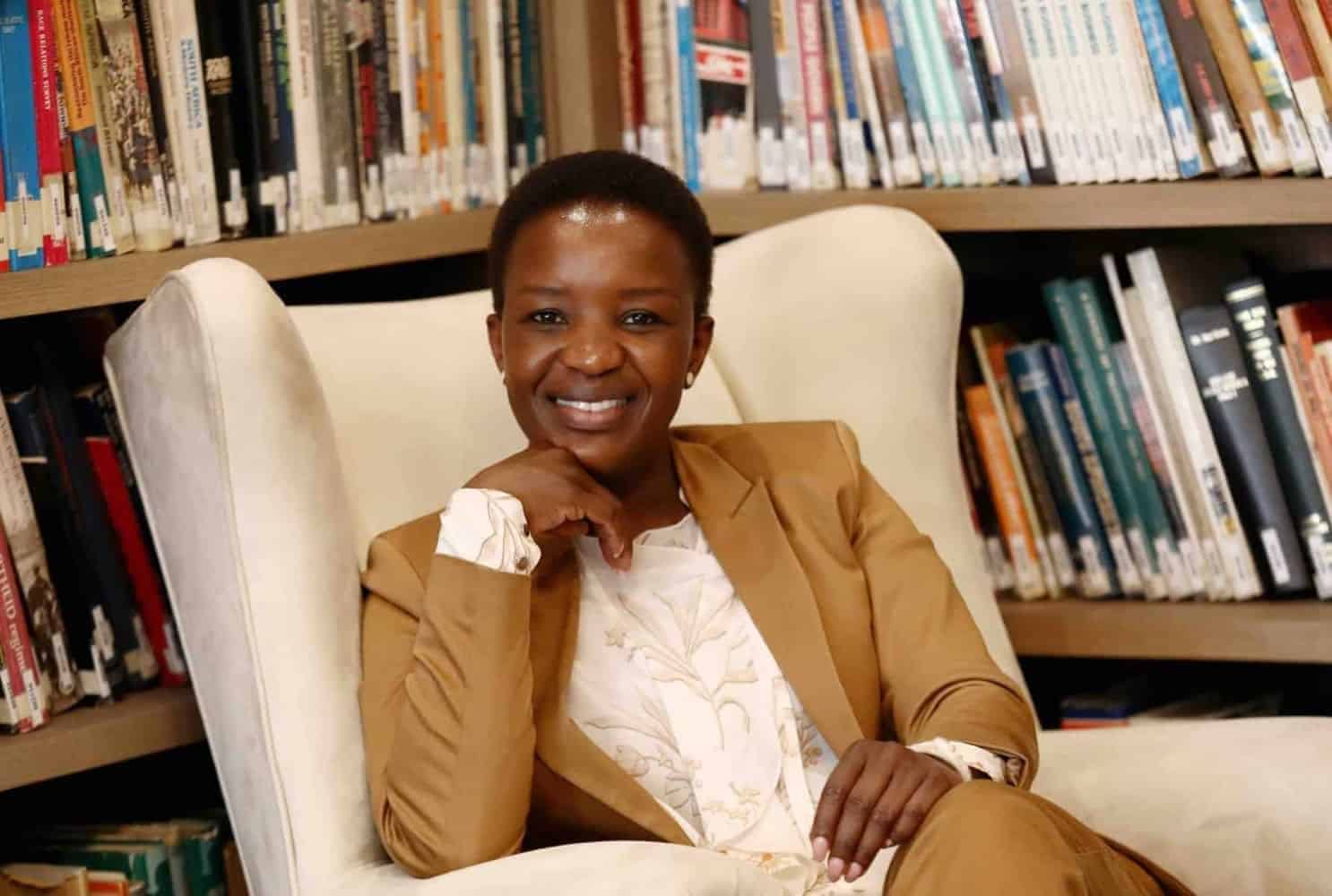Youth unemployment escalated over the past ten years, increasing by 9.2%. It is even worse for young people between the ages of 15 and 24.
The latest Quarterly Labour Force Survey shows that 10.3 million young people between the ages of 15 and 24 were unemployed in the first quarter of 2025.
These youths face the highest barriers to entering the workforce, and their unemployment figures significantly outpace those of older youth.
According to Statistics SA, which compiles the Quarterly Labour Force Survey released on Tuesday, young people between the ages of 15 and 34 make up roughly 50.2% of South Africa’s working-age population, translating to approximately 20.9 million individuals.
Statistics SA Statistician General Risenga Maluleke warns that while the challenges facing young South Africans in the employment space are not new, they are trending negatively in many cases, as youth unemployment has remained persistently high over the past ten years.
In the first quarter of 2015, the official unemployment rate for young people between the ages of 15 and 34 was 36.9%. By the first quarter of 2025, it had climbed to 46.1%, an increase of 9.2% that highlights deteriorating prospects for millions, as this graph shows:

However, Maluleke points out that the situation is even more pronounced for the youngest jobseeker between the ages of 15 and 24, where unemployment stood at 50.3% in the first quarter of 2015.
A decade later, it has increased to 62.4%, while unemployment increased for the group between the ages of 25 and 34 from 31.4% in 2015 to 40.4% in 2025.
ALSO READ: Jobs bloodbath as unemployment increases by 1% in first quarter
Some provinces have higher youth unemployment
According to Maluleke, youth unemployment remains one of South Africa’s most pressing challenges, although its weight falls unevenly across the country, with young people in non-urban areas bearing the brunt of unemployment.
He says the plight of unemployed youth deepens into economic exclusion in the North West and Eastern Cape provinces.
The first quarter of 2025 saw North West record a youth unemployment rate of 58.8%, while only 43.0% of its young people between the ages of 15 and 34 were active in the labour market. In the Eastern Cape, the picture is also serious, with an unemployment rate of 54.3% and the lowest youth labour force participation rate nationally at 39.8%, with fewer than four in ten young people employed or looking for work.
ALSO READ: ‘Government initiatives alone can’t address SA’s unemployment rate’
Young women bear brunt of youth unemployment
If you are young and female, the picture is even darker. Maluleke says if you are young and female, you are locked out of the economy as the youth labour market not only reflects age-based disparities but also entrenched gender inequalities.
Women continue to face greater barriers to employment, particularly among the youth. In the first quarter of 2025, the Not in Employment, Education or Training (NEET) rate for young people between the ages of 15 and 24 stood at 37.1%, with young women (37.5%) slightly more affected than young men (36.7%).
However, Maluleke points out, the disparity widens in the broader group of youth between the ages of 15 and 34, where the NEET rate was recorded at 45.1%. Here, 48.1% of women were NEET, compared to 42.2% of men, highlighting a persistent gender gap in access to work and skills development.
He says for many young South Africans, landing a job is more than just a milestone. “It is a crucial step toward economic independence and inclusion. Yet for millions, this first step remains out of reach.”
In the first quarter of 2025, approximately 1.9 million young people between the ages of 15 and 34 were classified as discouraged work-seekers (people who have given up looking for work), compared to 1.5 million adults between the ages of 35 and 64.
ALSO READ: A VIEW OF THE WEEK: What are we celebrating? A Workers’ Day with no work?
Young people more vulnerable to discouragement
Maluleke says these figures reveal how young people are especially vulnerable to discouragement, driven by limited experience and fewer employment opportunities.
Among the 4.8 million unemployed young people in the first quarter of this year, 58.7% reported they have no previous work experience.
“That means nearly six in ten unemployed young people are still waiting for their first opportunity to enter the job market.
“Without experience, young people struggle to get hired, but if they are not hired, they cannot gain experience. This cycle of exclusion continues to fuel long-term unemployment and stalls skills development at a critical stage of life.”
Maluleke says education continues to play a pivotal role in determining young people’s employment prospects. Those without a matric qualification face the steepest uphill climb, with an unemployment rate of 51.6%, the highest across all education levels.
Young people who completed matric find themselves slightly better off, although the unemployment rate for them remains high at 47.6%. Young people who obtain vocational or technical training (classified as “Other Tertiary”) fare somewhat better, with the unemployment rate reduced to 37.3%.
Lowest youth unemployment among graduates
The clearest advantage is seen among university graduates, whose unemployment rate drops significantly to 23.9%, illustrating the protective effect of higher education in a tight labour market, as this graph shows:


However, Maluleke says that despite the challenges, certain industries continue to provide key opportunities for young workers. In the first quarter of 2025, the trade industry, which includes retail, wholesale, and hospitality, remained the largest employer of young people, absorbing 24.5% of the employed youth population.
This was followed by community and social services at 19.8%, finance at 18.4% and manufacturing at 10.5%.


When it comes to job roles, Maluleke says young people are most concentrated in elementary occupations (25.3%), sales and services (20.0%), clerical roles (13.5%) and craft and related trades (11.2%).
“These numbers paint a clear picture: many young workers are clustered in low-skilled or service-based occupations,” Maluleke says.














